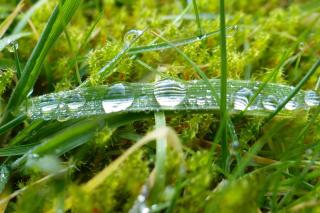De-thatching a lawn helps it grow more resilient and thick. The goal of dethatching is to remove moss and matted grass clippings that accumulate over the years, suffocating and replacing the lawn itself.
This also reduces the spread of diseases, and ensures that the lawn remains green and thriving all year round.
Follow our tips and you will have a lawn that looks and feels brand new, guaranteed to boost your self-esteem!
How to choose your de-thatcher
This depends on the surface area that must be de-thatched:
 Rake: for tiny patches of grass
Rake: for tiny patches of grass- Manual: for surface areas not exceeding 120 sq yd (100 m²)
- Electrical: for surface areas up to 600 sq yd (under 500 m²)
- Gas-powered: for surface areas exceeding 600 sq yd (over 500 m²)
Some product models are fitted with a collection system which makes the work much easier.
Best season to de-thatch
- Twice a year: in the spring after having mowed a couple times and in the fall to remove matted grasses (dried cuttings) and strengthen the lawn before winter.
- Before renovating your lawn in any substantial manner.
The right technique for a well de-thatched lawn
- De-thatching a lawn must be performed on slightly damp ground, neither drenched nor too dry.
If necessary, water the lawn beforehand.
- De-thatching requires following a cross-hatch pattern to avoid leaving any particular area out.
- De-thatching depth must be kept shallow at between 1/16th and 1/8th in (2 to 4 mm), since going too deep would tear roots apart.
- Any waste produced must be completely and carefully picked up, either with the de-thatcher’s collection hamper or by running the lawn mower across the lawn.
Read also on lawn care:
Images: Pixabay: Bernd Wälz; shutterstock: photowind


 Rake: for tiny patches of grass
Rake: for tiny patches of grass